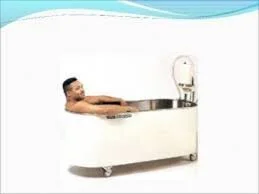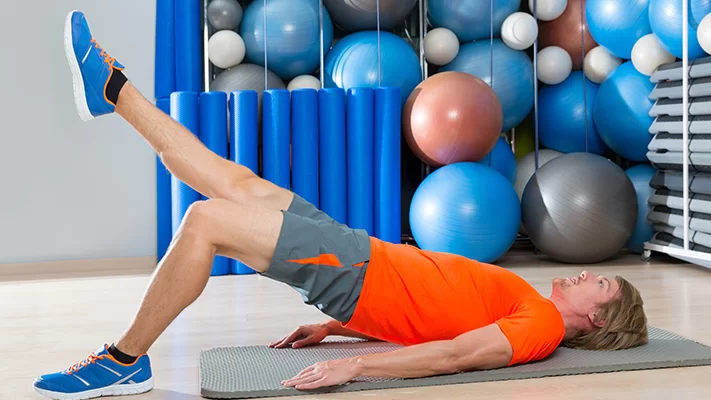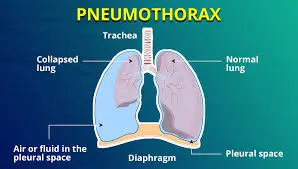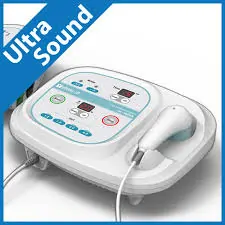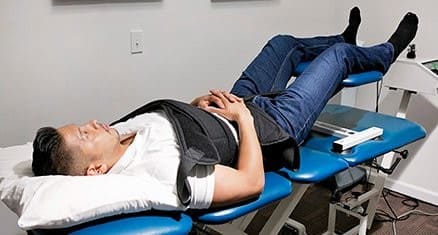Whirlpool Bath
What is Whirlpool Bath Therapy?
The whirlpool bath is a large tub that is filled with water. The body part to be treated is then placed in a tub of water, and a little motor circulates the water. While under the water, you can move your body parts to help with the movement around the damaged location.
A therapeutic tank built out of stainless steel, fiberglass, or plastic that uses turbines to circulate and oxygenate the water in which the body or its parts are submerged. Tanks come in a variety of sizes for dealing with different body sections (Hubbard and “low boy” tanks for full-body procedures and extremity tanks for arm or leg treatments).
It may be created in any size tub or tank, allowing you to submerge the entire body for a hydro-massage effect.
The temperature of the water in the whirlpool might be warm or cold, depending on the desired outcome.
A warm whirlpool typically has a temperature between 98 and 110 degrees Fahrenheit. Avoid consumption.
Warm whirlpools might improve circulation by opening up small veins in the body. Increased flow can send new blood, oxygen, and cells to the wounded area, facilitating healing.
A cool whirlpool is usually between 50 and 60 degrees Fahrenheit.
Cold whirlpools induce the arteries in the body to shut, which can help reduce flow to the body portion being treated. This is used to treat inflammation and edoema in the affected body area.
A usual whirlpool treatment lasts 10 to 15 minutes. Your physical therapist may have you perform particular exercises while your body part is in the whirlpool to help you work on the range of motion in that part.
Types of Whirlpool Bath:
- Lowboy tank.
- High boy tank
- Hubbard tank,
- butterfly structure,
- extremities tank.
Low boy tank:
The low-boy tank can hold one adult and ranges from 75 to 105 gallons.
High boy tank:
High boy tanks, frequently referred to as hip or leg tanks, provide for the penetration of both of the lower limbs.
The limit might range from 60 to 105 gallons.
Hubbard Tank:
A tank of suitable size and design for active or passive immersed activities. It can also be used to debride burns and other ailments.
Because of its size, the Hubbard tank provides a greater opportunity for activity during treatment, since it can fit a full body treatment limit and run anywhere from 200 to 400 gallons.
Figure 8:
The example allows for easy access to the patient. Take notice that larger tanks feature more than one turbine for agitation.
Butterfly Shape:
Submerged Exercises 8 feet in length, 6 feet wide, and 4 feet down 425 gallons of water stretcher, turbines, hoist, risk of contamination, pricey optional water measurement, cleaning time.
Extremity Tank:
The extremity tank is often used for the upper or lower extremities and has a capacity of 10 to 45 gallons of water.
Therapeutic Effects of Whirlpool Bath:
The whirlpool tub utilizes the positive aspects of conductive intensity with a soothing massage.
Hydromassage has a few different therapeutic effects:
- A calming activity.
- An improvement in pain caused by the agony walk instrument.
- An unraveling of muscular fits.
Physiological effects of Whirpool Bath:
Whirlpool baths, often called whirlpool tubs or jetted tubs, can provide a number of physiological advantages:
Increased Blood Flow: The massage action of the water jets promotes circulation throughout the body. This can assist increase the transport of oxygen and nutrients to tissues while also removing waste products.
Pain Relief: The enhanced blood flow and massaging effect of the water jets can help alleviate pain caused by muscle strain, joint pain, osteoarthritis, and other ailments.
Muscle Relaxation: The warm water and massage help to relax muscles, and promote flexibility and range of motion.
Tension Reduction: The warm water and spa-like atmosphere of a whirlpool bath can encourage relaxation and reduce tension.
Improved Sleep: Relaxation and stress reduction can contribute to better sleep.
It is worth noting that several studies on the physiological effects of whirlpool tubs are equivocal. However, many individuals feel that they are an effective method to ease pain, relax muscles, and reduce tension.
Goals of Whirlpool Bath Therapy:
The typical purposes of using whirlpools in physical therapy clinics include:
- Decrease swelling.
- Control inflammation.
- Promote wound healing.
- Improve movement
- Reduces pain and muscular spasms.
Common injuries and disorders that can be treated using whirlpool treatment are:
- Ankle fracture.
- Plantar fasciitis
- Lisfranc dislocation
- Colles fracture
- Smith fractures
- Possible injuries include ankle sprains, tennis elbow, Achilles tendon rupture, and tendinitis.
Uses of whirlpool bath:
- Whirlpool baths can cause burns without adequate agitation.
- Open the wounds for debridement.
- In post-operative orthopedic situations, the water acts as a buoyancy factor, eliminating the weight of the extremity for mobility.
- as a resisting force during exercise.
Technique of Application of Whirpool Bath:
The whirlpool tank is full of water.
after that check the temperature via a thermometer.
Adjust the patient’s posture based on the treated body part, taking into account both comfort and security.
Describe the procedure and reassure the patient.
Place the bodily part into the water.
In the instance of joint involvement, encourage the patient to move while keeping the affected body part underwater throughout therapy.
After completing the therapy, dry the body area and wrap it to keep it warm.
Water Temperature:
- The recommended temperature ranges from 36°C to 41°C, with a steady increase until the patient’s maximal tolerance is reached.
Treatment Duration of the whirlpool bath:
- Between 15 to 45 minutes.
Actions of Whirpool Bath :
- leading to vasodilation.
- Improve local arterial and lymphatic circulation.
- Scar tissue softens.
- Dissolving previous adhesions following fractures or sprains.
- Cleaning and stimulating wounds.
- Mechanically eliminating dirt, dead tissue, and pus.
- causing the inflammatory process to subside.
- Edoema and effusion will be reduced.
- The portion to be treated is immersed in the water, and a jet of stream is permitted to create turbulence in the hot water.
Indications of Whirlpool Bath:
- Conditions include poor circulation and chronic edoema.
- Separate the dead tissue.
- Pain alleviation after amputation (phantom pain)
- After removing the plaster cast (fractures)
- Stiff joints.
- To treat infected wounds, add an antiseptic.
- Arthritis with tight, swollen joints.
- Improve circulation by treating poliomyelitis and paraplegia.
- Traumatic and chronic inflammatory diseases.
- Weak, aching feet.
- In preparation for massage, passive stretching, and exercise.
Contraindications of using a whirlpool bath:
- diabetes and varicose veins.
- Advanced arteriosclerosis
- Advanced peripheral vascular disorders.
- A sick patient with fresh skin transplants.
- Circulatory impairment
- Active bleeding
- Open wounds.
- Possible symptoms include hemorrhaging and skin allergies.
Side effects of Whirpool Bath:
While whirlpool tubs provide relaxation and possible health advantages, there are certain drawbacks to be aware of:
Skin Irritation: The disinfection chemicals used in whirlpool tubs, along with the heat and water jets, might irritate some people’s skin, particularly those with sensitive skin.
Infection Risk: If the whirlpool bath is not properly maintained and cleaned, you may catch bacteria or other germs that can cause diseases.
Dehydration: The warm water can produce sweating, and spending too long in a whirlpool bath might result in dehydration. Make sure you get enough fluids before, during, and after your bath.
Lightheadedness or Dizziness: Warm water and increased blood flow can make individuals feel lightheaded or dizzy, especially if they haven’t eaten recently.
Overheating: The combination of warm water and hot jets might elevate your body temperature too high, especially if you are sensitive to heat or have a medical condition.
Note:
When the dimension of the whirlpool bath is adequate for therapy, the Hubbard Tank is recommended since it allows the entire body to be absorbed and all muscle groups to train in a water setting.
The whirlpool bath can also be used to provide ultrasonic therapy to the extremities. In the present situation, water serves as an intermediate for connection.
FAQ’s
What exactly is a whirlpool bath intended for?
Whirlpool treatment is a physical therapy technique designed to treat a wide range of musculoskeletal and neurological illnesses. While the name may make it appear scary, a nontoxic therapy has been shown to have little to no negative effects.
What is the underlying idea of whirlpool bath therapy?
How Whirlpools Are Used in PT. The whirlpool is a big tub filled with water. The physical piece to be treated is subsequently placed in a tub of water, and a little engine stirs the water. While under the water, you can move your body parts to help with the movement around the damaged location.
What is a whirlpool bath in physiotherapy?
a therapeutic bath in which all or part of the body is treated to intense swirling jets of hot water.
What are the advantages of a whirlpool bath?
Whirlpool baths have warm water, relaxing planes, and kneading bubbles. A Whirlpool’s pulsating jets not only relieve muscle and tension, but they also promote blood flow to the body, improving circulation. Increasing circulation throughout the body is critical in combating ailments such as diabetes and renal failure.
Do whirlpools aid arthritis?
Whirlpools are indicated as a treatment for osteoarthritis and rheumatoid arthritis pain.
Is a whirlpool useful for knee pain?
Turn your hot tub into an exercise spa. The Arthritis Foundation claims that warm water therapy is the most well-tested and pleasurable treatment for knee pain. Water treatment can provide instant relief from knee discomfort as well as long-term prevention against future problems.
Does Whirlpool assist with back pain?
The whirlpool jets work on tight muscles, gradually breaking them down, while warm water relieves pain. A jetted bathtub with carefully positioned jets may effectively address problem areas. Hydrotherapy enhances the healing process.

